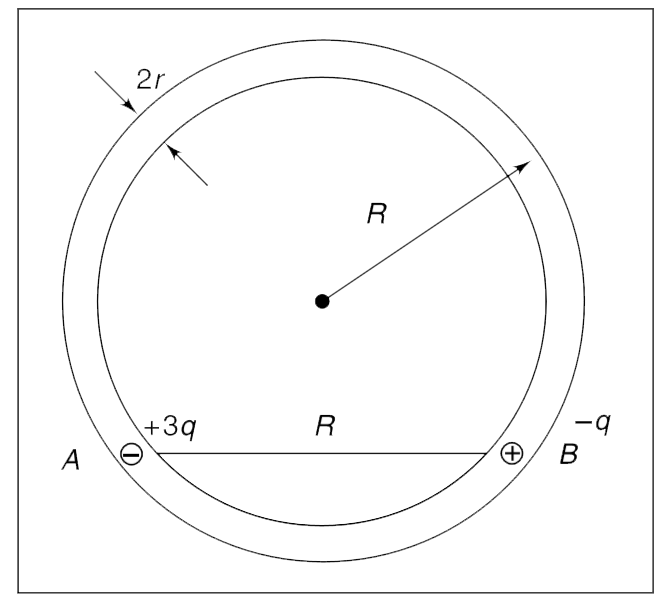On a horizontal table, there is a smooth circular groove of mean radius R. The walls of the groove are non conducting. Two metal balls (each having mass m and radius r) are placed inside the groove with their centers R apart. The balls just fit inside the groove. The two balls are given charge + 3q and – q and released from state of rest. Ignore the non-uniformity in charge distribution as the balls come close together and collide. The collision is elastic. Find maximum speed acquired by each ball after they collide for the first time.

The correct Answer is:
Step by step video, text & image solution for On a horizontal table, there is a smooth circular groove of mean radius R. The walls of the groove are non conducting. Two metal balls (each having mass m and radius r) are placed inside the groove with their centers R apart. The balls just fit inside the groove. The two balls are given charge + 3q and – q and released from state of rest. Ignore the non-uniformity in charge distribution as the balls come close together and collide. The collision is elastic. Find maximum speed acquired by each ball after they collide for the first time. by Physics experts to help you in doubts & scoring excellent marks in Class 12 exams.
Topper's Solved these Questions
Similar Questions
Knowledge Check
- Question 1 - Select One
Tyres are grooved to
ADecrease frictionBIncrease frictionCIncrease weightDDecrease the weight - Question 2 - Select One
The soles of our shoes have grooves. This is to
AIncereass the friction between shoes and the groundBincludeCinteractiveDintive - Question 3 - Select One
Ambulacral grooves are absent in the class
AAsteroideaBCrinoideaCOphiuroideaDNone of these
Deltoid groove is present in
View SolutionProtists having transverse and longitudinal groove in their theca are
View Solution$ Dinoflagellates have two grooves in the cell wall.
! There are many flagella in each groove.View SolutionAmbulacral grooves are absent in
View SolutionTwo balls, each of radius R, equal mass and density are placed in contact, then the force of gravitation between them is proportional to
View Solution

